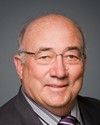Thank you.
I think you have to understand--and I'm sure you heard on the 6th of October when Exporail was here--that the CRHA was around at the time the railways were going through major changes, and they were able to assemble what was truly an outstanding collection of representative railway and tramway rolling stock, and they have continued to do so. They have a large proportion of significant railway artifacts in their collection. They were able to pick and choose, literally, which class of steam locomotive they wanted to preserve.
They certainly have a significant portion of any national collection. They are also willing and able, and have demonstrated this, to disperse this collection to a certain extent across the country--they have pieces from Salem and Hillsborough Railroad in New Brunswick through to Prince George and Revelstoke in B.C.--to somewhere they can be assured that the artifacts are going to be properly cared for and preserved in conditions that are as good as or better than those in which they would have been able to look after them themselves. We have a location that happened, by circumstance, to have a wide-ranging collection assembled at the time these were becoming available.
Other institutions across the country have done an excellent job in assembling specific elements of the national railway historical collection, to tell the stories in their particular locales. Therefore, I think the federal government has a role to play both in supporting the local or regional locations where the national story is being told in railway museums and in supporting Exporail.
As far as funding goes, I would say that, yes, you could support both very easily. I believe you heard something in the range of $75 million, coming from the Canadian Museums Association, as a starting point for appropriate funding by the federal government for the museums in Canada. If 5% of that went to the railway museums, I think you would be making a significant contribution, on an annual basis, to improving and preserving railway heritage in Canada. We might be able to get some of the collections properly housed and properly displayed and properly interpreted for the public.





